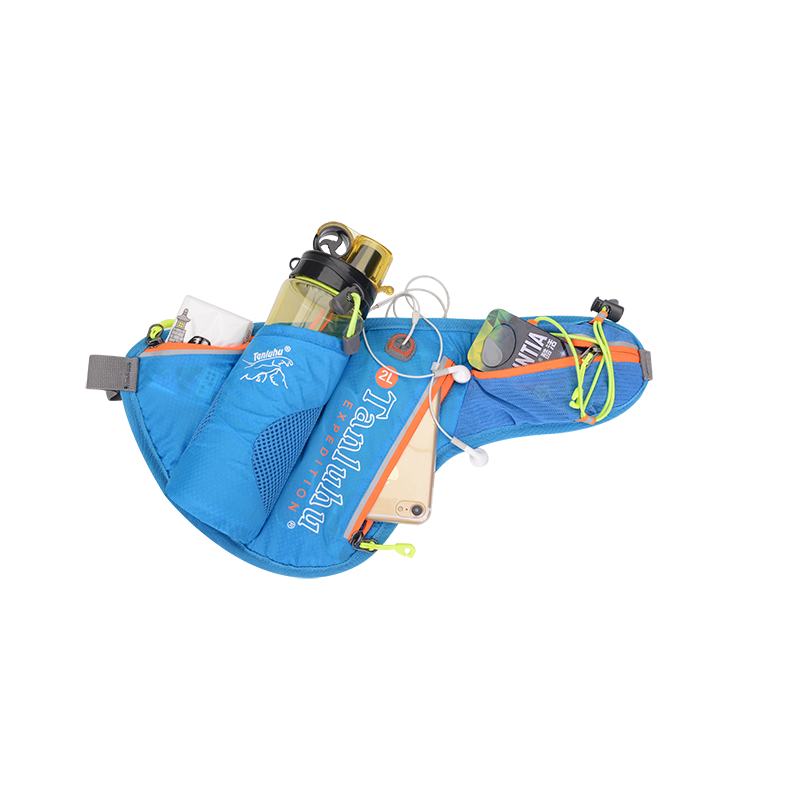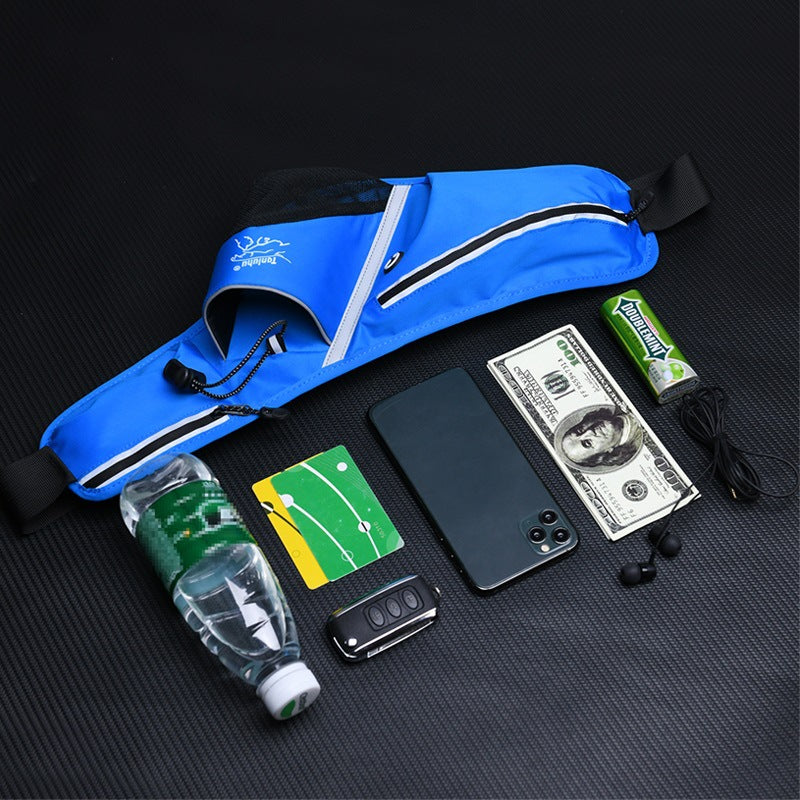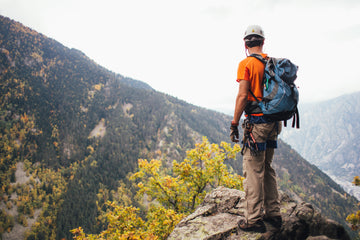8 Best Outdoor Backpacks for Every Adventure 2025
You’re planning your next outdoor adventure, and you know one thing for sure: you need the right gear to make it enjoyable and hassle-free. Whether you’re heading out for a day hike, a weekend camping trip, or a multi-day trek, your backpack is the cornerstone of your gear setup. But with so many options on the market, how do you choose the perfect outdoor backpack?
We’ve spent over 48 hours researching, testing, and reviewing some of the best outdoor backpacks available today. From lightweight daypacks to heavy-duty expedition packs, we’ve got you covered. In this guide, we’ll share our top recommendations, highlight key features to look for, and provide practical tips to help you make the best decision.
Our Top 3 Picks
WAUTTON YINGLANG 20L DAYBAKC – Best Lightweight Daypack and Budget Option

For day hikes or quick overnight trips, the WAUTTON YINGLANG 20L offers a perfect balance of lightweight design and functional features. Weighing just 12.35 ounces, this pack doesn’t sacrifice comfort or durability.
Key Features:
- 20-liter capacity with a sleek, streamlined design.
AirContact Lite backsystem for breathability and support.
Quick-access pockets and stretch mesh side pockets.
Reflective elements for visibility in low light.
Pros:
- Ultra-lightweight and comfortable.
Versatile for hiking, commuting, or travel.
Durable despite its slim profile.
Cons:
- Limited storage for extended trips.
No built-in hydration system.
Osprey Atmos AG 65 – Best for Multi-Day Treks

If you’re tackling long-distance trails or multi-day expeditions, the Osprey Atmos AG 65 is your ultimate companion. This pack is designed for maximum comfort and load stability, thanks to its innovative AirSpeed® backpanel that provides exceptional ventilation and weight distribution.
Key Features:
- 65-liter capacity with expandable storage options.
Ergonomic hip belt and padded shoulder straps for all-day comfort.
Internal hydration bladder compatibility.
Multiple organizational pockets and gear loops.
Weather-resistant fabric with rain cover included.
-
Pros:
Exceptional comfort for heavy loads.
Durable and well-ventilated.
Excellent organization and accessibility.
Cons:
- Bulky for shorter trips.
Higher price point.
Gregory Mountain Products Zulu 28 – Best for Technical Terrain
When adventure calls you to rugged, technical trails, the Gregory Zulu 28 is built to handle the challenge. This pack combines lightweight design with robust features, making it ideal for demanding hikes.
Key Features:
- 28-liter capacity with a focus on load stability.
Articulated shoulder harness and breathable hip belt.
External gear loops and compression straps.
Hydration-compatible with easy-access ports.
Weather-resistant fabric with reinforced stress points.
Pros:
- Exceptional stability on uneven terrain.
Comfortable for long hikes.
Versatile storage options.
Cons:
- Slightly heavier than some daypacks.
Higher price compared to budget options.
Comprehensive Review of the Best Outdoor Backpacks
Deuter Speed Lite 20
Capacity: 20L | Weight: 14.1 oz | Material: High-tenacity nylon
The Deuter Speed Lite 20 is a minimalist’s dream. At just over a pound, it’s barely noticeable on your back, yet it’s packed with features. The AirContact Lite backsystem provides ventilation without adding bulk, while the stretch mesh pockets are perfect for water bottles or a lightweight jacket.
We used this pack on a series of day hikes and were impressed by its balance of comfort and functionality. The hip belt is slim but supportive, and the shoulder straps adjust effortlessly to different body types.
Why We Love It:
- Ultra-lightweight and versatile.
Ideal for day hikes, commuting, or urban exploration.
Durable despite its slim profile.
Drawbacks:
- Limited capacity for extended trips.
No built-in rain cover (though one can be added separately.
Osprey Atmos AG 65
Capacity: 65L | Weight: 4.1 lbs | Material: Robust nylon with TPU coating
The Osprey Atmos AG 65 is a game-changer for long-distance hikers. Its AirSpeed® backpanel ensures airflow between your back and the pack, preventing sweat buildup even on hot days. The hip belt is wide and padded, distributing weight evenly across your hips rather than your shoulders.
We tested this pack on a 7-day trek through the mountains, and it handled heavy loads with ease. The internal organization is impressive, with multiple pockets for tools, snacks, and electronics. The stretch mesh side pockets easily accommodate large water bottles or trekking poles.
Why We Love It:
- Perfect for multi-day treks or backpacking trips.
- Durable and weather-resistant.
- Comfortable even under heavy loads.
- Overkill for short day hikes.
- Requires some practice to fully utilize its features.

Capacity: 28L | Weight: 2.2 lbs | Material: 420D nylon with TPU coating
The Gregory Zulu 28 is designed for hikers who prioritize stability and durability. Its articulated shoulder harness moves with your body, reducing strain on technical terrain, while the hip belt provides excellent load support.
We tested this pack on rocky trails and steep ascents, and it performed flawlessly. The external gear loops allow you to attach trekking poles or a sleeping pad, and the compression straps keep everything secure.
Why We Love It:
- Exceptional stability on uneven terrain.
- Comfortable for long hikes with moderate loads.
- Versatile storage options.
- Drawbacks:
- Slightly heavier than other daypacks.
- Higher price point.

Capacity: 20L | Weight: 1.35 oz | Material: Durable Nylon
- 20-liter capacity with expandable top lid.
- Internal hydration bladder compatibility.
- Multiple organizational pockets and gear loops.
- Why We Love It:
- Great capacity for weekend trips.
- Affordable compared to premium brands.
- Comfortable for most users.
- Drawbacks:
- Less durable than higher-end options.
- Limited ventilation compared to top-tier packs.

Capacity: 22L | Weight: 1.5 lbs | Material: Recycled polyester
Key Features:
- 22-liter capacity with organized pockets.
- Padded shoulder straps and hip belt.
- Reflective accents for visibility.
- Made from recycled materials.
- Stylish and versatile.
- Great for everyday use or light hiking.
- Eco-friendly construction.
- Drawbacks:
- Limited capacity for extended trips.
- Basic ventilation system.

Capacity: 24L | Weight: 2.1 lbs | Material: 1000D Cordura nylon
Key Features:
- 24-liter capacity with modular storage options.
- Heavy-duty Cordura nylon construction.
- Quick-access pockets and MOLLE webbing.
- Weather-resistant and abrasion-proof.
- Built to last in harsh conditions.
- Tactical design with versatile storage.
- Comfortable for long hours on the move.
- Heavier than lightweight daypacks.
- Higher price point.

Capacity: 30L | Weight: 1.3 lbs | Material: Recycled polyester
The Patagonia Black Hole 30L is a travel favorite. Its durable construction and versatile design make it perfect for backpacking, commuting, or weekend getaways.
- 30-liter capacity with a weather-resistant shell.
Padded shoulder straps and hip belt.
Multiple organizational pockets.
Made from recycled materials.
- Durable and weather-resistant.
- Great for travel or light hiking.
- Eco-friendly and stylish.
- Limited technical features for serious trekking.
- No hydration system compatibility.

Capacity: 12L + 100 oz hydration bladder | Weight:14 oz | Material: nylon
- 12-liter capacity with integrated hydration system.
- Quick-stow pockets for water bottles.
- Breathable Air Director backpanel.
- Weather-resistant fabric.
- Excellent hydration integration.
- Comfortable for active use.
- Durable and easy to clean.
- Heavier than non-hydration packs.
- Limited storage for large items.
Key Considerations When Choosing an Outdoor Backpack
Capacity
Comfort
Durability
Organization
Hydration Compatibility
Weight
FAQ
Can outdoor backpacks be used for everyday carry?
Yes! Many backpacks, like the North Face Borealis or Patagonia Black Hole, are versatile enough for daily use, commuting, or light hiking.
How do hiking backpacks differ from regular backpacks?
Hiking backpacks are designed for load distribution, ventilation, and technical features like gear loops and hydration compatibility. Regular backpacks prioritize style and urban functionality.
Are there disadvantages to lightweight backpacks?
Lightweight packs may sacrifice durability or storage capacity. They’re best for experienced hikers who prioritize minimalism.
How can I maintain my outdoor backpack?
Clean it after each trip, store it in a dry place, and repair tears or zippers promptly. Use a rain cover in wet conditions to protect your gear.




















